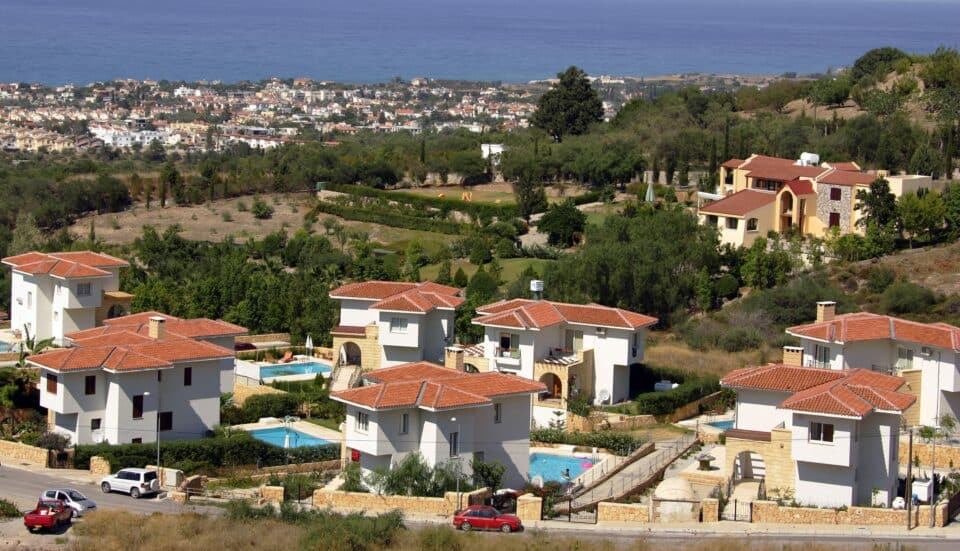Numbers could be up as much as 40 per cent since 2011
The population of the north may have increased by as much as 40 per cent since the last census in 2011, compared with a ten per cent growth rate in the south of the island, sparking a furious debate on why Turkish Cypriots are being left to ‘guesstimate’ how many of them are left and if they themselves have become a minority.
“We know the population!… There are some numbers that you can talk about and some that you cannot. There are some things that cannot be said,” lashed Unal Ustel, head of the Turkish Cypriot ruling coalition, on live TV recently when asked why there are no plans to do a census in the northern part of Cyprus.
Besides leaving the presenter and viewers speechless, the statement once again ignited the debate about the mystery around the population living in this part of the island.
“What is it that you can’t talk about?” opposition deputy Dogus Derya immediately took the social media. “What are you trying to hide? That we have become a minority in our own country?”
The last census in the north was done in 2011 with unofficial United Nations supervision and found the de jure population to be some 286,000, excluding Turkish military and their families residing in military bases. Although there were widespread reports of undercounting, this is the only figure that the Turkish Cypriot statistics office currently has, to make projections.
Taking the 2011 census as a basis, the office has recently announced a projected population of almost 400,000 as of the end of 2022. This figure was found unrealistic by most including the head of the statistics office Irfan Tansel Demir himself, who acknowledged that the projection has a considerable margin of error because of the time that has passed since the last census in 2011. Demir also raised questions about the accuracy of that census “because many people were not found at home.”
Even with these official numbers, however, the increase in population is stark. The difference between the 2011 census and the 2022 projection points to an almost 40 per cent increase in population in 11 years. The population growth rate in the Republic of Cyprus during the same period was less than 10 per cent.
Senior researcher Mete Hatay from PRIO Cyprus Centre, who has done extensive research on the population in the northern part of Cyprus, says that the projection only takes into account criteria such as fertility and death rates of the community and does not include the vital – and presumably huge – number of those, who are working in the black economy or who have overstayed their visas.
“We know that the population is at least half a million, but we don’t have the necessary details to make a healthy estimate,” says Hatay. He adds that “in any case, at any given moment, Turkish Cypriots are a minority in the northern part of Cyprus.
Turkish Cypriots in every walk of life feel the consequences of the overpopulation. Last month, the Cyprus Turkish Teachers Union (KTOS) official Akgun Kacmaz, talked about the shortness of teaching staff and mentioned that container classrooms had been set up in many public schools to manage the student numbers due to the increasing population.
Izlem Gurcag, who was responsible for the health dossier of the northern part of Cyprus, admitted in August as she was leaving her post that, “Our financial resources are not enough for the population that is cascading every day.”
Hatay says that as well as the size, the composition of the population in the north is also changing rapidly. Whereas until a few years ago the non-Turkish Cypriot population was almost exclusively Turkish, recently there is a tremendous number of people from other countries flowing into the north.
Currently there are some 110,000 foreign university students in over 20 universities in the north – mostly from Africa, Arabian Peninsula, Africa, Middle East, and Far East. They come to the northern part of Cyprus on a student visa, which is very easy to get. For the first time this year, the number of students from these third countries exceeded the number of students from Turkey.
The last couple of years also saw a huge increase in the Russian and Iranian population in the northern part of Cyprus. Russian news agency Itar Tass reported a few months ago that some 50,000 Russians live in the northern part of Cyprus, where Kremlin recently started mobile consular services. According to the official data by the tourism department, only in January-September this year, some 39 thousand Russians and 33 thousand Iranians came to north through the sea and airports.
“We don’t want to know”
Researcher Hatay argues that there is a deliberate political decision not to make any census “because we don’t want to know.”
“First of all, the more ambiguous the population numbers are, the more it can be politicised,” asserts Hatay. “Everyone benefits from the ambigiouty. Some ask for more money based on inflated numbers, some use the ‘Turkish Cypriots are becoming extinct’ fear to get votes.”
But more importantly, according to Hatay, a census would reveal certain realities on ground, such as the alarming number of people – mostly university students – working in the black economy.
“A huge system of exploitation has been set up through universities,” says Hatay. “There are slave students here.”
The higher education sector, which is one of the main engines of the Turkish Cypriot economy, has grown in an uncontrolled fashion as the policy has been to open as many universities and attract as many foreign students as possible. According to the US State Department’s Trafficking in Persons Report in 2022, in many cases, foreign students are promised low tuition fees, accommodation and access to good jobs. Once in the northern part of Cyprus, they end up being exploited as cheap labour, or forced into prostitution or drug trafficking. Some are smuggled into the Republic of Cyprus.
According to Hatay, not doing a census also serves conveniently to obscure the size of certain groups of people in the country.
These groups do not just consist of Turks anymore – whose increasing presence in the north has always been contentious.
“They especially don’t want to talk about the foreign property owners,” says Hatay.
According to Hatay, some 60,000 new homes were sold in the last seven years, the majority of which were bought by foreigners. The numbers in the official gazette show that the number of foreigners – mostly Russians – investing in property has significantly increased as of November 2022, which coincides with the sanctions on Russian nationals due to the war in Ukraine. Russians can easily buy property in the northern part of Cyprus as banks here are not part of the international Swift system and operate via Ankara, which has not put sanctions on Russia. There currently are a further 15,000-20,000 thousand ongoing construction of homes. According to economist Merkan Hamit, looking at the construction projects and the prices, it can roughly be estimated that the property sales generate an annual 1 billion dollars, which is almost one thirds of the gross domestic product of the northern part of Cyprus.
Turkish Cypriot judiciaries have recently been warning about a risky money circulation in the northern part of Cyprus, whereby large amounts of money are coming in for real estate purchases but then going completely unchecked.
In some cases, these foreign property owners have been revealed as individuals wanted by Interpol. Earlier this week, Russian citizen Vladislav Apakov wanted by Interpol for embezzling large amounts of money, was found to be residing in the north. In June, another Russian national Stanislav Mitrushi wanted by Interpol for money laundering, was arrested in the north. Last year, Australian fugitive Mark Buddle also wanted by Interpol for links to a transnational criminal syndicate was arrested in the north, where he had acquired a sizeable amount of property. The recently published Global Organised Crime Index 2023 states that “In areas not under the effective control of the Republic of Cyprus, there are a number of people wanted by Interpol.”
Considering how important the higher education and real-estate sectors are for the economy of the northern part of Cyprus, this order of exploitation and illicitness needs to continue, and it can only continue if the ambiguity continues.
“The northern part of Cyprus, which has long been isolated from the world, has now integrated with the world through a system of exploitation and illicitness,” concludes Hatay. “And the long-standing controversy and speculation surrounding the population serves to maintain this. For this to continue, we have to not know.”







Click here to change your cookie preferences